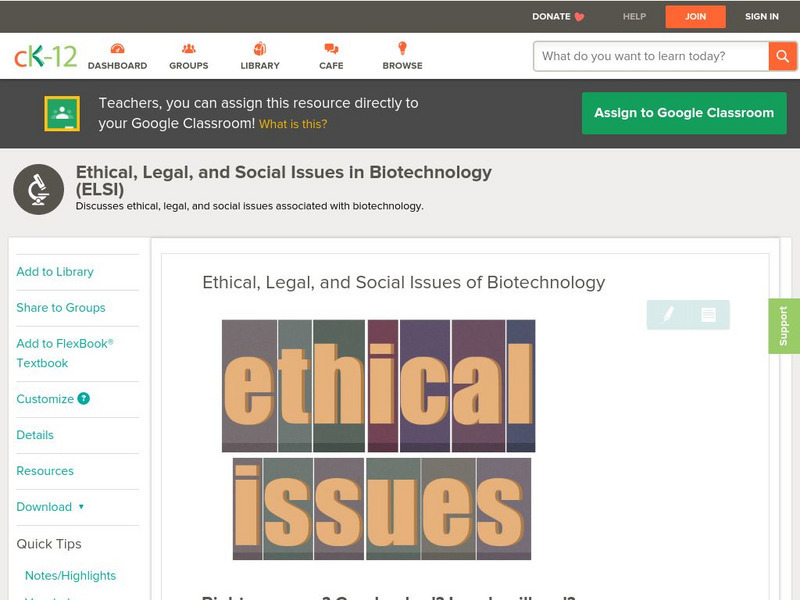Kenan Fellows
Unit 1: Introduction to Biotechnology
Biotechnology is big! Introduce the uses of biotechnology to science scholars with a fascinating, fact-filled unit. The first installment in a series of four biotechnology units covers the role biotechnology plays in human and...
TeachEngineering
Teach Engineering: Engineering Nature: Dna Visualization and Manipulation
Students are introduced to genetic techniques such as DNA electrophoresis and imaging technologies used for molecular and DNA structure visualization. In the field of molecular biology and genetics, biomedical engineering plays an...
Sophia Learning
Sophia: Genetic Testing: Lesson 1
This lesson will describe how diseases can be predicted by genetic testing, which is cause for ethical discussion. It is 1 of 3 in the series titled "Genetic Testing."
CK-12 Foundation
Ck 12: Life Science: Biotechnology in Agriculture
[Free Registration/Login may be required to access all resource tools.] The majority of the corn in the United States is genetically engineered. Corn syrup is used to sweeten many things, like Coke. Corn is also fed to the cows. Learn...
Georgia Department of Education
Ga Virtual Learning: Biology: Dna, Rna, and Protein Synthesis
In this online mini-course learners distinguish between the structure, functions, and processes involved with DNA and RNA.
CK-12 Foundation
Ck 12: Biology: Ethical, Legal, and Social Issues of Biotechnology
[Free Registration/Login may be required to access all resource tools.] Describes some of the ethical, legal, and social issues of biotechnology.
CK-12 Foundation
Ck 12: Life Science: Cloning
[Free Registration/Login may be required to access all resource tools.] Cloning is the process of creating an exact replica of an organism. The clone's DNA is exactly the same as the parent's DNA. Bacteria and plants have long been able...






